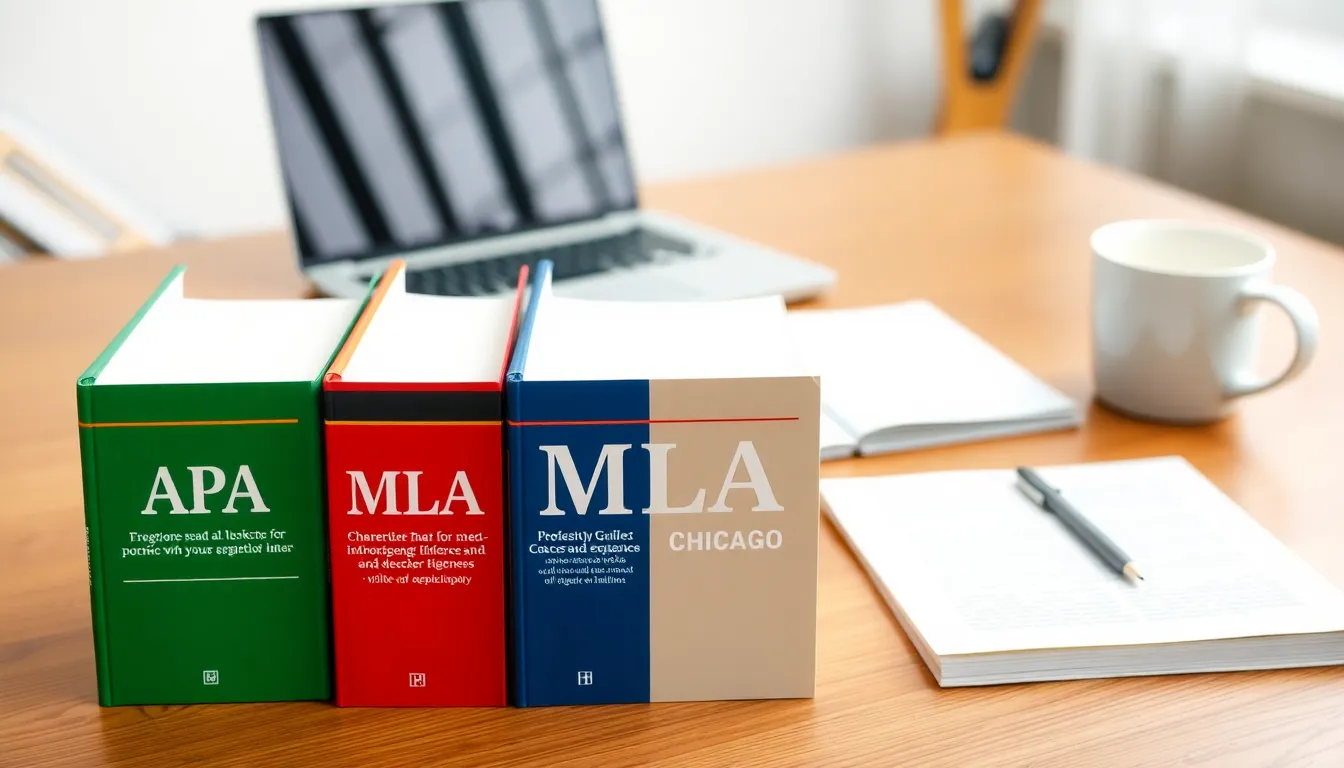Table of Contents
ToggleIn a world overflowing with fonts, colors, and design choices, crafting a cohesive brand identity can feel like herding cats. Style guides are the unsung heroes of the creative universe, providing the roadmap to keep everything in check. They’re not just boring documents; they’re the secret sauce that ensures a brand speaks with one clear voice—no more awkward silences in your marketing materials.
Understanding Style Guide Samples
Style guides are crucial in defining a brand’s voice and visual language. They provide a framework that ensures consistency in communication.
Importance of Style Guides
Style guides play a vital role in establishing a cohesive brand identity. They outline rules for tone, language, and visuals, ensuring all materials align with the brand’s objectives. This consistency helps avoid confusion among audiences and strengthens brand recognition. By clearly defining expectations, style guides facilitate collaboration among team members, making sure everyone follows the same guidelines. They also enhance overall professionalism, boosting credibility with clients and consumers.
Types of Style Guides
Numerous types of style guides exist, catering to different needs. Brand style guides focus on logos, colors, and typography, outlining how to visually represent the brand. Editorial style guides specify grammar, punctuation, and tone for written content, ensuring uniformity across publications. Digital style guides target online presence, detailing web design elements and social media language. Each type serves a specific purpose, helping organizations maintain clarity and coherence in their messaging. Businesses choose the appropriate style guide to align with their unique goals and audience expectations.
Analyzing Popular Style Guide Samples

Examining various style guides highlights their significant role in maintaining clarity and consistency across different writing formats. Each guide maintains unique characteristics tailored to specific audiences and contexts.
APA Style Guide
The American Psychological Association’s style guide often caters to social sciences, psychology, education, and other fields. Formatting rules cover in-text citations, references, and paper structure. Clarity remains paramount; therefore, authors focus on using concise language, avoiding complex jargon. Standard citation formats emphasize the importance of authorship and date, which aids readers in finding sources quickly. APA encourages authors to structure papers with headings, facilitating easier navigation for readers.
MLA Style Guide
The Modern Language Association style guide primarily serves the humanities, including literature, philosophy, and cultural studies. It emphasizes citation formats that focus on authorship, making it easier for readers to trace sources. In-text citations require brief parenthetical references beside quotes. Works cited pages organize referenced works alphabetically. Authors utilize clear and coherent prose while adhering to specific formatting guidelines, such as double-spacing and indenting paragraphs. Overall, MLA promotes an organized approach to writing and research.
Chicago Manual of Style
The Chicago Manual of Style offers flexibility in formatting, appealing to writers in various disciplines. It features two systems: Notes and Bibliography for the humanities and Author-Date for the sciences. Each system provides clear guidelines for footnotes, endnotes, and bibliographies. Authors appreciate the Chicago style’s attention to detail, which includes specific rules for punctuation and capitalizations. Comprehensive examples help writers understand proper citation patterns, ensuring that their work adheres to industry standards while enhancing readability.
Creating Your Own Style Guide
Creating a style guide involves careful consideration of key components that contribute to cohesive branding and communication.
Key Components to Include
Establishing brand identity requires clarity in tone and language. Specify the brand voice, allowing it to resonate with the target audience. Include guidelines for visual elements such as logos, colors, and typography, which visually represent the brand. Define grammatical and punctuation preferences to ensure uniform writing styles. Document examples for clarity on dos and don’ts, making it easier for users to follow. Incorporating examples from existing materials can illustrate practical applications of the guidelines. Overall, the key components create a comprehensive resource for anyone involved in brand communication.
Best Practices for Consistency
Consistent application of the style guide reinforces brand recognition. Encourage team members to reference the guide regularly, ensuring alignment with brand values. Update the guide periodically to reflect any changes in branding or messaging strategies. Utilize project management tools or shared drives for easy access, making it available to all stakeholders. Provide training sessions that cover the style guide, enhancing understanding and adherence among team members. Lastly, seek feedback from collaborators to identify areas for improvement, promoting an evolving document that adapts to the organization’s needs.
Practical Applications of Style Guides
Style guides serve crucial roles in various fields, ensuring effective communication and uniformity. They streamline processes in both academic and business environments, allowing for clarity and consistency.
In Academic Writing
Academic writing benefits significantly from style guides, which provide clear structures for citations, formatting, and stylistic choices. The APA Style Guide addresses the social sciences, emphasizing concise language and clear, systematic citation methods. Meanwhile, the MLA Style Guide, with its focus on humanities, promotes coherent organization in essays and research papers. Each style guide reduces ambiguity by outlining expectations for tone and presentation. This consistency helps students and researchers communicate ideas effectively, enhancing credibility in scholarly work.
In Business Communication
In business communication, style guides create a unified approach that shapes brand messaging and external perceptions. Businesses adopt specific guidelines for tone, language, and visuals to ensure every document aligns with brand identity. They enhance professionalism, making communication clear and effective across various channels, such as emails, reports, and presentations. By adhering to established style guides, teams facilitate collaboration and reduce miscommunication, ultimately reinforcing brand credibility. These guides, tailored to specific audiences and goals, underpin successful business interactions and relationships.
Style guides are indispensable for any organization aiming to establish a strong and consistent brand identity. They not only clarify communication but also foster collaboration among team members. By defining tone, language, and visual elements, style guides help brands connect effectively with their audiences.
Adopting the right style guide can significantly enhance clarity and professionalism in various contexts. Whether in academic writing or business communication, these guides streamline processes and reduce misunderstandings. As organizations evolve, regularly updating and refining style guides ensures they remain relevant and effective. Ultimately, investing in a well-crafted style guide pays dividends in brand recognition and credibility.




